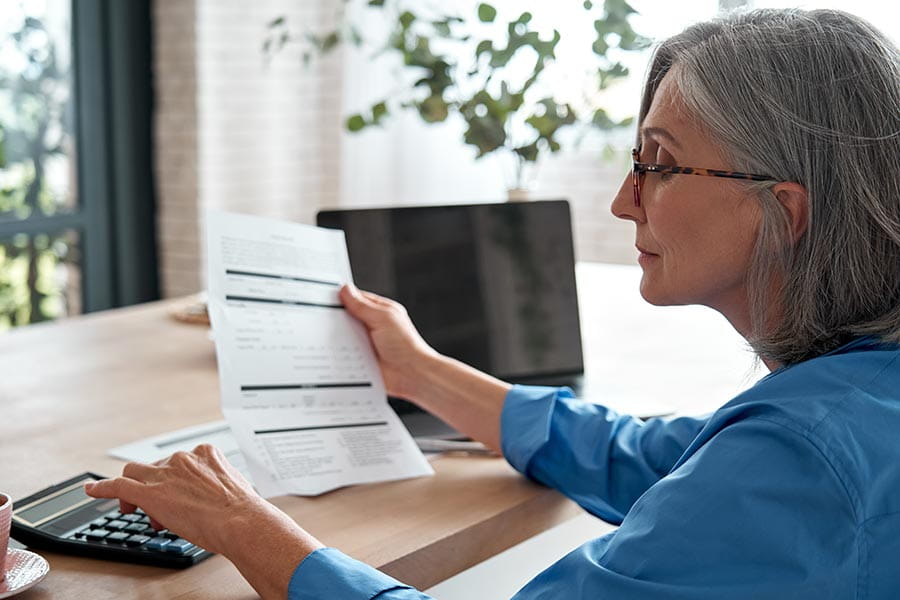

Whether you’re retired, employed or self-employed, understanding how your savings are taxed can help when it comes to financial planning.
In this guide, we’ll help you get a grip on how tax on savings works in the UK. You’ll find answers to your questions, including what the Personal Savings Allowance is, how much tax-free savings interest you can earn and what happens when you retire.
Whether you pay tax on your savings depends on your income, the type of savings account you use and allowances you may have.
The main thing to understand is that you pay tax on any savings that go above a certain threshold. This threshold is called the Personal Savings Allowance. Your Personal Savings Allowance depends on how much taxable income you earn.
The Personal Savings Allowance (PSA) is the amount of interest you can earn on your savings in a tax year without paying income tax. The tax year runs from 6th April to 5th April the following year.
Your PSA covers interest earned on all your savings accounts with all providers (excluding ISAs).
How much tax-free savings allowance you’re eligible for depends on the rate of income tax you pay, which is based on your income. The HRMC website has details on Income Tax rates and Personal Allowances.
| Tax rate | Taxable income | Personal Savings Allowance |
|---|---|---|
|
Basic rate taxpayers (20%) |
£12,571 - £50,270 |
Up to £1,000 per year |
|
Higher rate taxpayers (40%) |
£50,271 - £125,140 |
Up to £500 per year |
|
Additional rate taxpayers (45%) |
£125,140+ |
£0 - no Personal Savings Allowance |
Non-taxpayers (those earning less than £12,570 a year) could earn as much as £18,570 in tax-free savings interest – you can find more information on this below.
When you have a joint bank account, the savings interest you earn is split equally between both account holder’s PSAs.
For example, if both account holders are basic rate taxpayers and the total savings interest amounts to £2,000, this is divided evenly between both savers. This utilises both account holders’ full £1,000 PSA, so the £2,000 savings interest is tax-free.
The same rules apply if one account holder is a basic rate taxpayer and the other is a higher rate taxpayer.
In this case, if the savings interest is £2,000, this is split evenly between both account holders. The basic rate taxpayer uses up their £1,000 PSA. Meanwhile, the higher rate taxpayer would use their £500 PSA, but the extra £500 would be subject to income tax.
You start paying tax on savings as soon as you exceed your Personal Savings Allowance.
If you’re a basic rate taxpayer, once you’ve earned £1,000 in tax-free savings interest, everything you earn after is taxed.
All savings interest is taxed for additional rate taxpayers.
If you earn less than £18,570 a year (including your income and savings interest), you might not pay any tax on the interest earned on your savings. That’s because you’re eligible for three allowances, which are:
Are you a non-taxpayer earning up to £12,570 a year? You’re automatically eligible for the starting savings rate (you can earn £5,000 savings interest tax-free) plus the Personal Savings Allowance (a further £1,000 tax-free savings interest).
If you pay income tax through Pay As You Earn (PAYE) tax, you don’t have to declare the interest earned on your savings.
HM Revenue & Customs automatically consider the accumulated interest. If you owe any tax, they adjust your tax code accordingly.
As a result, your personal allowance (how much you can earn before paying income tax) for the following tax year is reduced, so you pay back any tax you owe on savings interest automatically.
If you’re self-employed, you must declare any interest earned when you complete your self-assessment. Make sure you report the interest you’ve accrued in non-ISA accounts, like the Saga Easy Access Savings Account, provided by Goldman Sachs International Bank. The Saga Savings Platform, powered by Flagstone, provide an interest statement each tax year to help with this.
When you retire, tax on savings works the same as when you’re in employment.
You’re entitled to a personal allowance of £12,570, and any pension earnings above this threshold (including State Pension) are taxed. How much depends on your total income.
Usually, the first 25% of your pension income is tax-free, and the next 75% is taxable.
Like in your employed years, your Personal Savings Allowance stays active during retirement, providing a tax-free allocation for savings interest. Basic rate taxpayers can benefit from up to £1,000 in tax-free interest each year after retirement. Higher rate taxpayers get up to £500 and additional rate tax payers get no allowance.
Here to support your savings goals

Discover our 3-month fixed-term savings accounts, available from the Saga Savings Platform in partnership with Flagstone

Discover budgeting advice and money-saving tips in our comprehensive guide


Recover lost pensions, savings and Premium Bonds effortlessly with Saga’s guide



Find out more about the options we offer with Goldman Sachs International Bank and Flagstone.
